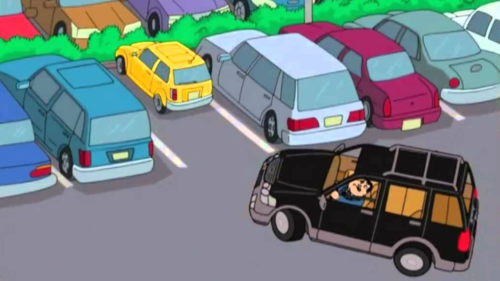
As a car enthusiast with a passion for driving classic British two-seat sports cars, I can’t help but notice how many drivers of modern small cars pull all the way into typical 20-foot-long parking lot spaces. Hidden from approaching motorists and pedestrians, they become sitting ducks for rear-end accidents and the consequences of vehicle damage, injuries and legal expenses.
Origin of “Butt Out Parking”
BUTT OUT parking means to position the rear end (or BUTT) of a car towards the traffic lane adjacent to a row of pull-in parking spaces. It’s not a new concept, just a new term for a something prudent car owners already do.
To the best of my knowledge, usage of the phrase “Remember to butt out” when parking has been limited to my immediate family, beginning back in the 1990s, most often when arriving at the shopping center with one or both of my young sons in the car. It was always good for a giggle, as we enjoyed — and still enjoy — fun driving experiences.
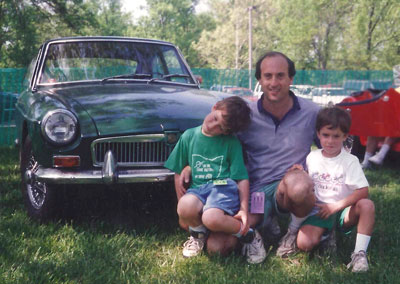
Here’s a family photo of the Butt Out originators, circa 1996, with our 1968 MGB-GT. That car (now owned by the kid on the right) measures a few inches shy of 13′ in length, about the same as the current MINI Cooper 2-door coupe. Cars of this size need to BUTT OUT about 4-6′, depending on the driver’s common-sense evaluation of the situation.
Making the argument for safer parking
In 2008, I obtained the ButtOutParking.com domain name, thinking I would share the concept with other small car owners. However, that endeavor was put on the back burner when I started another website, coincidentally associated with parking lots, called funkhana.com. It’s a melting pot of information about the light-hearted, low-speed driving skills competition called a funkhana. It was popularized by British car clubs in the 1960s as a group activity, usually set up in an unoccupied parking lot.
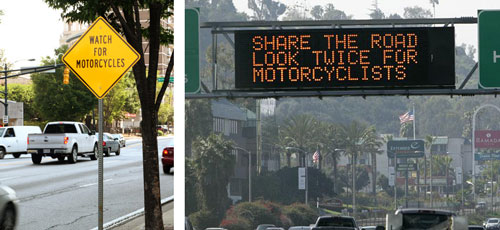
Fast forward to last month when I broached the idea of a Butt Out website with friends who are insurance agents with expertise in coverage of collectible cars and other specialty vehicles. We discussed whether the number of insurance claims resulting from parking lot fender-benders could be reduced with a catchy “Butt Out” safety awareness campaign, similar to warnings for motorists to “Watch out for motorcycles” and “Share the road.” These messages commonly appear on road signs, posters and promotional items like t-shirts and decals, thanks to safety campaigns launched by insurance companies, state Departments of Transportation and others.
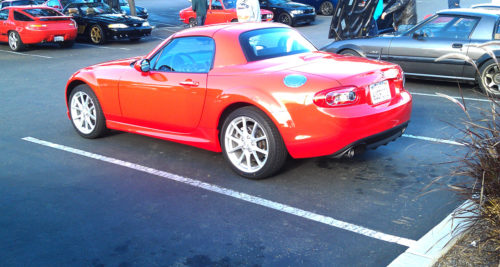
I would be remiss in not mentioning there are many parts of the world where back-in parking — also known as reverse parking — is the norm. There are also places in the US where the trend is growing, based on the argument that it’s safer to back into a “protected” rectangular space upon arrival than to depart by backing out to a potential flow of traffic. With reverse parking, drivers should simply position the butt of their car out from the closed end of the space.
Whether you front-in or back-in to a parking space, the message I want to convey is that small cars should be positioned in a parking space such that they are readily visible from the lane of traffic.
Spreading the word about Butt Out Parking
It’s now December, 2017, and the ButtOutParking.com website, Facebook page, and Twitter account are up and running. If you have read the post down to HERE, then you probably have an interest in the BUTT OUT Parking concept. Please take time to regularly visit our Facebook page to learn when new articles are added to this blog, to see the latest parking related news and photos, and to make comments and share your stories. Thank you for visiting.
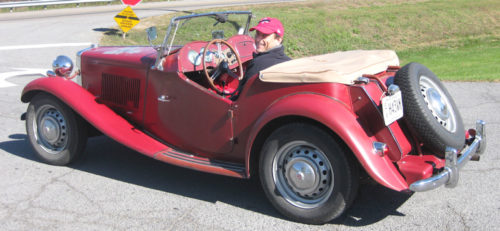
Safe travels,
John Olman
December, 2017
